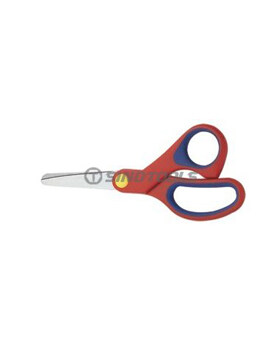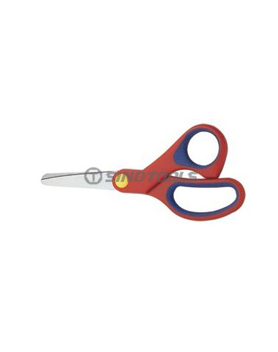-
 Grace Zhao
Hi there! Welcome to my shop. Let me know if you have any questions.
Grace Zhao
Hi there! Welcome to my shop. Let me know if you have any questions.
Your message has exceeded the limit.

5 Hand Tool Safety Tips For Every Workplace
2021-05-14 17:45:56
In every workplace, hand tool safety tips are very useful. Almost every job needs them, and healthy hands are necessary for every job.
People who work in warehouses, construction sites, or industrial sites may use hand tools more frequently, but even office workers use scissors, box knives, and utility knives.

In fact, in these seemingly "safe" workplaces, such as offices, the most important thing to emphasize is safety: complacency and lack of safety awareness are the primary causes of injury. Moreover, employees who do not use tools often are unlikely to know how to use tools properly. It is easy to deviate from practice in the safe use of tools.
For those jobs with less conventional hazards, the safety rules for tools and equipment do not need to be dealt with frequently. However, a quick and safe moment every two weeks will help remind employees to stay vigilant.
Cutting tools pose a risk of cuts, tears, and punctures. The National Safety Council lists these as one of the top three injuries that cause employees to be unable to work. So, even though these suggestions seem obvious, they obviously need to be repeated. These five hand tool safety rules will help ensure the safety of all workers.
1: Reserve specific areas where workers use hand tools
If possible, arrange a designated place for your workers to use hand tools, especially cutting tools. The actual act of having to go to a specific area to use the tool will help workers pay more attention to the task at hand. Other workers or tourists will also realize that this is an area where people use potentially dangerous tools. This is an area where they need to be vigilant about security.
This is also a good way to stay organized. All things related to the use of tools-PPE, tools, cutting mats, etc.-are in one place. Workers do not need to find what they need. This also increases the opportunity for workers to use the appropriate PPE and approved tools. The easier it is to stay safe, the more likely it is that workers will fully comply with all agreements. Having a specifically designated area tool will also make inventory easier to track. If something is missing, it will be obvious.
2: Keep PPE and hand tools in good working condition
The safe use of hand tools must first ensure that the tools are working properly. For cutting tools, this means that the blade must be in working condition. Dull blades are dangerous because they require more force to cut. This increases the possibility of tool slippage.
The blade should also be clean, without large chips, and if it is metal, it should not be rusty. Note that when a standard (for example, metal or ceramic blades does need to be replaced, the used blades must be disposed of in a sharp container. The tool itself should have no loose parts or cracks. Any tool that does not meet these standards should be fixed or replaced.
All tools must be cleaned regularly. This is especially true for tool handles. Hands are notorious for spreading germs. The objects we touch, such as handles, become home to thousands of potentially infectious bacteria and viruses. This is one of the hidden dangers that are easily overlooked in the workplace. Tools must be cleaned after each use.
3: Provide proper PPE
All PPE must not have holes or cracks. It is also important: personal protective equipment fits well. A major complaint, especially with regard to gloves, is that they are clumsy and do not allow free movement. Personal protective equipment is never a panacea. It is important to provide proper gloves, as lack of hand protection is the main cause of injury.
PPE should be cleaned regularly, especially when several workers share the same PPE. The same reason applies to cleaning tools here: it's just good hygiene.
4: Choose the safest tool
High-quality tools are more durable and safer than thin and cheap tools. The well-being of your employees is worth investing in. Look for ergonomically designed tools. This will reduce the possibility of fatigue and repetitive stress damage. Make sure that the handle surface is easy to grip; this will reduce the possibility of slippage.
Also pay attention to other design features, such as whether the tool has appropriate weights for easy control.
When choosing a cutting tool, pay attention to how to protect the user from the blade. Is there a helmet? Is the handle retractable? Also, consider touch-safe blades.
5: Regularly teach the safety of correct hand tools
Improper use is one of the most common causes of injuries to workers when using tools.
It's easy to stay safe
Security is not complicated, but it must be taken seriously to avoid harm. Unfortunately, it is clear that, given the number of preventable workplace injuries to employees, this is not always the case. Simple precautions, such as the safety tips for these five hand tools, maybe the difference between a healthy hand and going to the emergency room.
-
1.5LB Size Steel Axe With Beech Wood Handle
-
New Type High Carbon Steel Materials Multifunctional Axe With Inverted Longer Oak Wooden Handle
-
A613 600GHATCHET WITH FIBERGLASS HANDLE, 1250G FELLING AXE
-
Wood Handle Axe
-
New outdoor equipment tool axe multi-function field axe knife high hardness portable small axe manufacturer direct sale
-
Field multi-tool axe knife high quality tactical axe solid wood handle with hexagonal hook rope factory direct sales
-
New outdoor multi-purpose open mountain axe with hexagon board hand and all black rubber handle fire axe
-
All black innovative multi-functional axe outdoor camping survival tool Axe hammer rubber handle anti-skid
-
Outdoor high hardness stainless steel axe cluster from survival safety axe solid wood handle climbing axe
-
Outdoor multifunctional stainless steel axe safety fire axe high quality camping survival axe
-
Outdoor survival multi-tool axe High hardness stainless steel battle axe rescue fire axe
-
Outdoor Survival Axe Camping Clumps From Logging Axe all Black Like Plastic Handle Multi-Purpose Axe
-
Camping Kit Multi Function Stainless Steel Axe Camping Axe With Sheath Rubber And Plastic Material
-
Good quality solid wood stainless steel material inflatable axe laser texture technology inflatable axe
-
Outdoor Multi Functional Camping Hammer Axe Handle Solid Wood Material Ice Axe And Kitchen axe China
-
Clamps Super Clamp Supplier Tube Clamps Manufacturers
-
Axes Hand Tools Wholesale Garden Tools
-
The Development Direction of Hardware Tools China

